Ping Pong Pressure
We have all experienced wind and, like it or hate it, it affects us. Moving air can jostle your hair about, fly a kit, or, […]

You’ve seen Steve Spangler use blow dryers or industrial-sized blowers to levitate ping pong balls, beach balls, and send toilet paper flying through the air. You can replicate this levitating object phenomenon on a smaller scale using objects that are right in your home! The Floating Ping Pong Ball trick uses amazing principles of air that are sure to amaze anyone, from your science teacher, to your parents, to your neighbors!
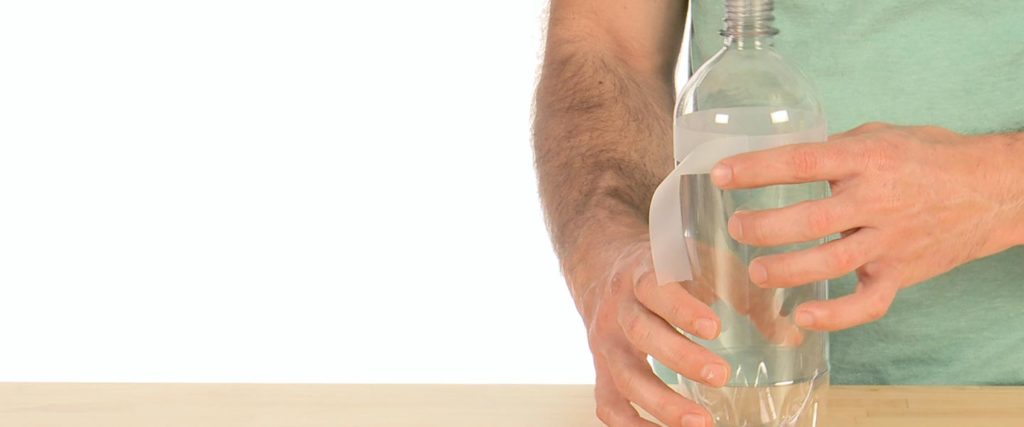
Near the top of a 1-liter bottle, approximately where the bottle stops curving and begins to straighten out, wrap a piece of tape. Try to wrap the tape as straight as possible.
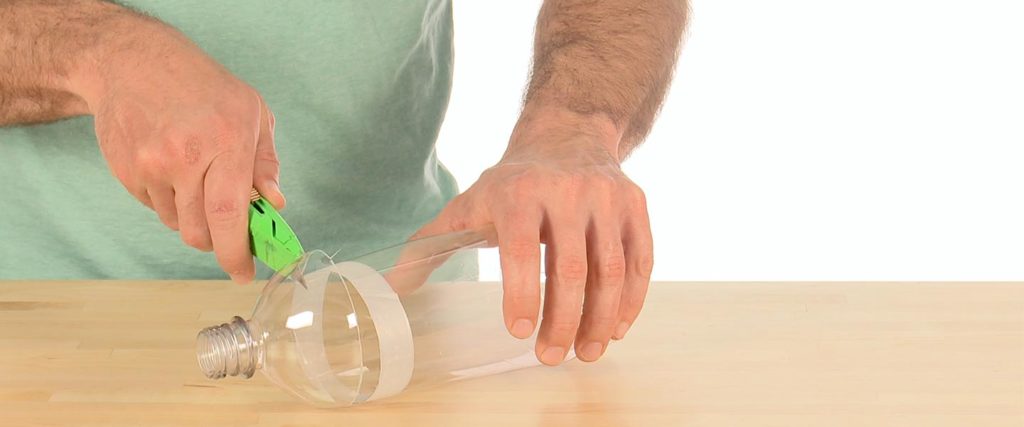
With adult help, use the tape as a guide to cut the top of the bottle off with the box cutter. Again, try to make your cut as straight as possible.
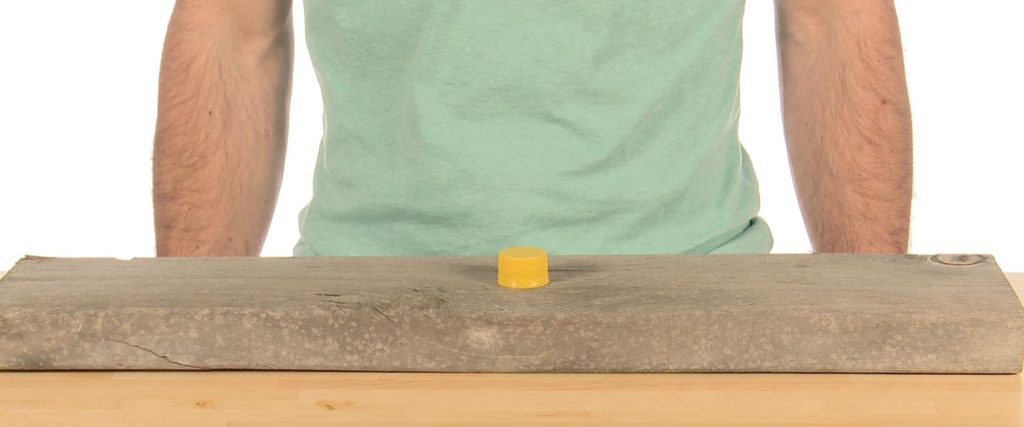
*For steps 3 and 4, make sure to find a work bench or similar surface and have an adult helper.*
Place the bottle cap, open side down, onto the work bench.
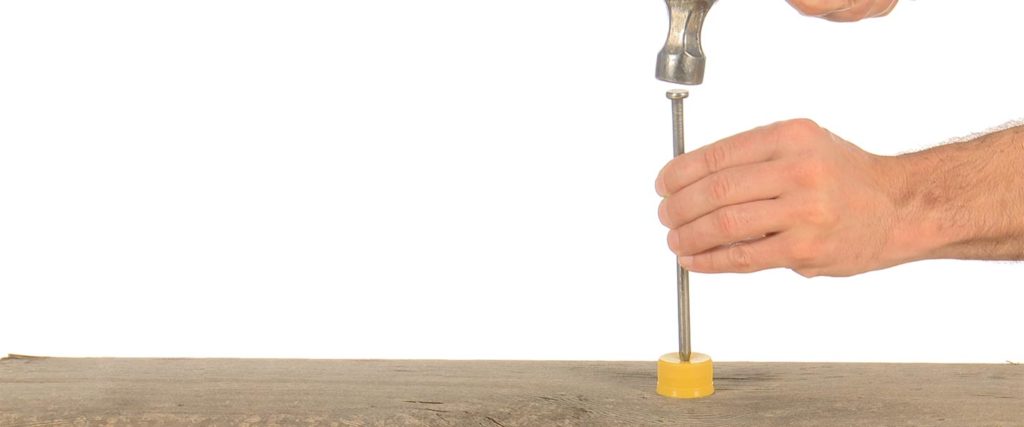
Center a large nail on the top of the bottle cap and use a hammer to punch a hole in the cap.

Pull the nail out of the bottle cap and you should have a nice, round hole.
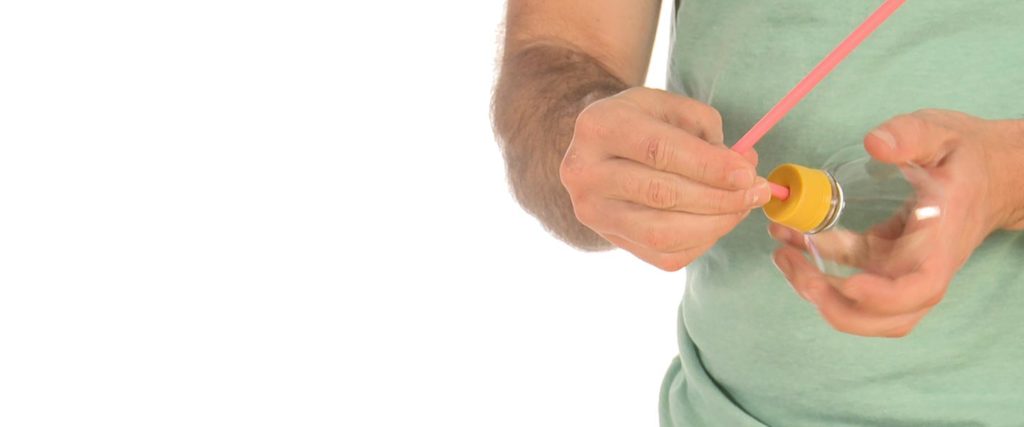
Test the bottle cap to see if a bendy straw will fit snugly in the hole you’ve created. If it does, you’re good to go.
If the hole is too small, find a larger nail and widen the hole. If the hole is too large, you’ll need to find another cap and use a smaller nail.
Once you have the perfect bottle cap and hole, screw the cap onto the top of the bottle.
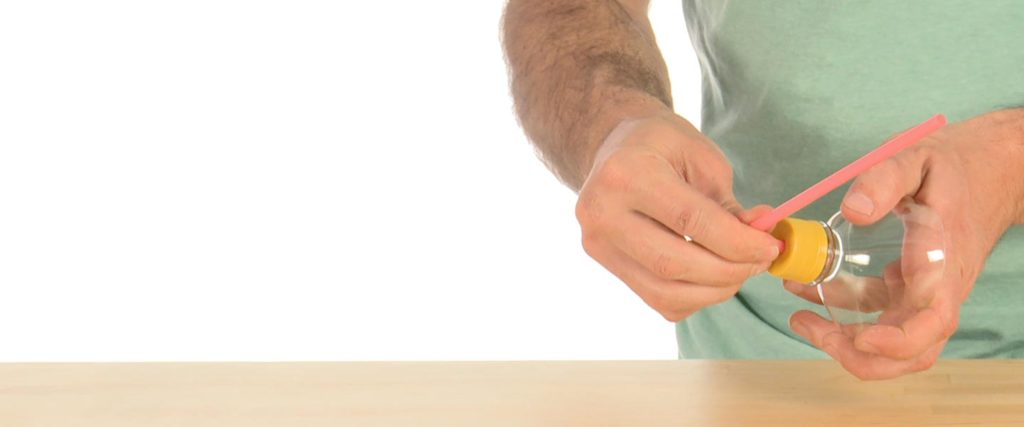
Place the short end of the bendy straw through the hole.
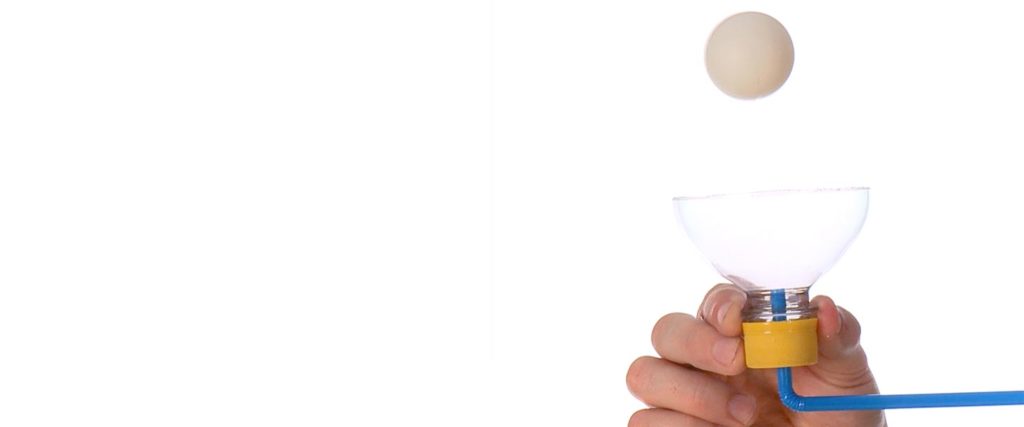
You’re ready to give the Floating Ping Pong Ball a try! Start blowing into the the straw (the end opposite the bottle) and place the ping pong ball over the stream of air.
Much to the surprise of anyone watching, the ping pong ball hovers in midair over the bottle. Wow!
The Floating Ping Pong Ball is a wonderful example of Bernoulli’s Principle, the same principle that allows heavier-than-air objects, like airplanes, to fly.
Bernoulli, an 18th century Swiss mathematician, discovered something quite unusual about moving air. He found that the faster air flows over the surface of something, the less the air pushes on that surface. That means that the air pressure on the object is lower than average.
The air from the straw, as you blow through it, produces the levitating ball phenomenon using Bernoulli’s Principle. The fast air moving that you are blowing around the sides of the ball is at a lower pressure than the surrounding, stationary air. If you look closely, you’ll see that the ball wobbles while it is levitating in midair. The ball is attempting to leave the area of low pressure, but the higher air pressure surrounding it forces it back into the low pressure area.
Are there any other objects that you can make float using the apparatus that you’ve created?
Demonstrating a floating ping pong ball is pretty cool, but it isn’t a science fair project. You can create a science fair project by identifying a variable, or something that changes, in this experiment. Let’s take a look at some of the variable options that might work.
That’s just a couple of ideas, but you aren’t limited to those! Try coming up with different ideas of variables and give them a try. Remember, you can only change one thing at a time. If you are testing different straw diameters, make sure that the other factors are remaining the same.